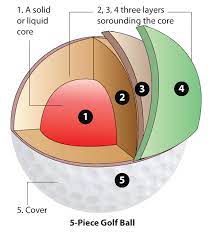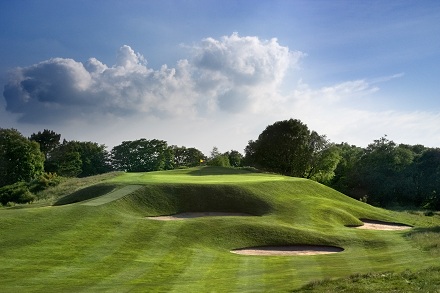Types of golf balls
A standard golf ball has a diameter of 1.68 inches (42.67 mm) and a weight of 1.62 ounces (45.93 grams).
Golf balls typically come in two main types of construction: two-piece and multi-layerTwo-piece balls have a large solid core and cover, while multi-layer balls have several layers including a core, mantle and cover.
The number of dimples on a golf ball can impact its aerodynamics and flight characteristics. Typically, golf balls have between 300 and 500 dimples, and more dimples generally lead to a higher flight path.
The compression rating of a golf ball refers to its ability to compress upon impact. Low compression balls They are softer and tend to be better for slower swing speeds., while high compression balls are firmer and better for faster swing speeds.
Golf ball covers are usually made of materials such as surlyn, urethane and balata.Each material has unique characteristics that can affect spin, feel and durability.
Dimple patterns can influence the aerodynamics of a golf ball.The different dimple designs are designed to reduce drag, increase lift and improve overall flight stability.
If you are a player in the initial stages, it may not make much sense to look for what would be your ideal ball. However, if you already have a good level of play, there is a "fitting" service called ballnamic which uses the information you provide about your playing style and uses advanced algorithms to recommend your ideal ball.
The core of a golf ball is responsible for its initial velocity and energy transfer upon impact. It can be made from various materials such as rubber or resin, and its design affects the overall performance of the ball.
Golf ball manufacturers use specialized equipment to test factors such as spin rate, angle of Throw, distance and durabilityThis testing helps ensure that your products meet quality and performance standards.
Distance balls are designed to maximize the distance they travel when hit, while control balls prioritize spin and precision, making them ideal for skilled players looking to shape their shots.
Yes, weather conditions such as the temperature, humidity and wind can affect the performance of a golf ball. For example, colder temperatures can make a ball feel harder, potentially affecting its distance and feel.
Some manufacturers They offer ecological balls made from biodegradable materials or using sustainable production methods. These options seek to reduce the environmental impact of the manufacturing and final disposal of the balls.
Professional players often consider factors such as feel, spin control and trajectory when selecting a ball. They may also work closely with manufacturers to customize their balls to their specific style.
The speed of the turn affects the trajectory and braking power, and plays a crucial role in the performance of golf balls. Golf balls vary depending on their composition. High-end balls, used by professional golfers, are often made of multiple layers, while beginner balls often have only two layers to achieve the necessary hardness. This approach influences the spin rate and, therefore, the performance of the ball. In addition, the material used in the manufacture of the balls, such as surlyn in the case of beginner balls, affects the spin rate and other aspects of the ball's performance.
Therefore, spin speed is a determining factor in the performance of golf balls, and is influenced by the composition and material used in their manufacture.

